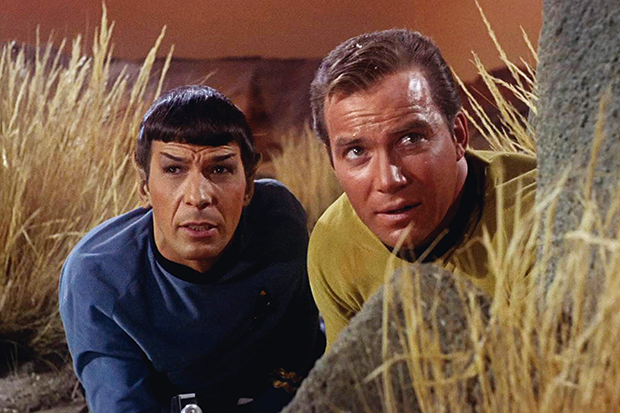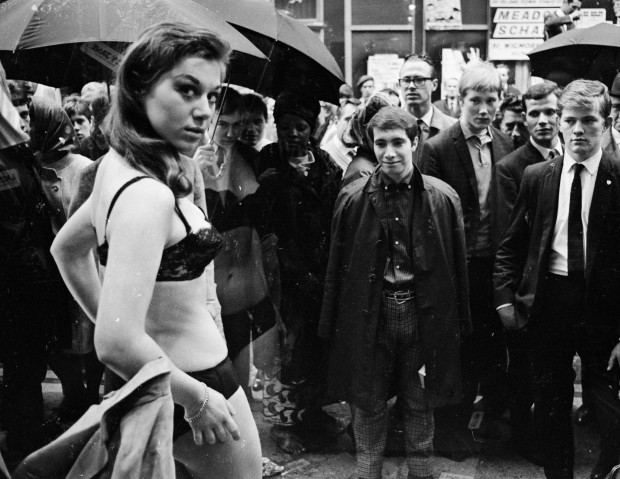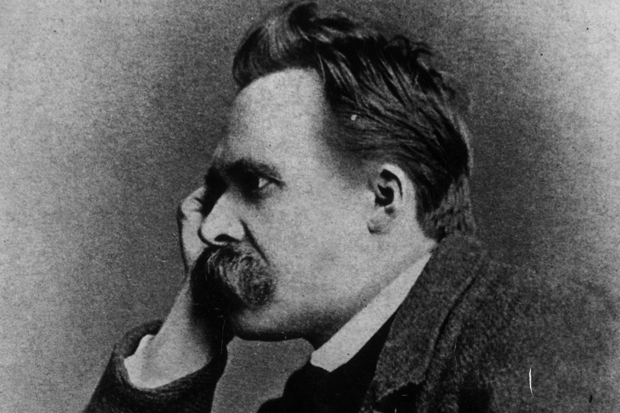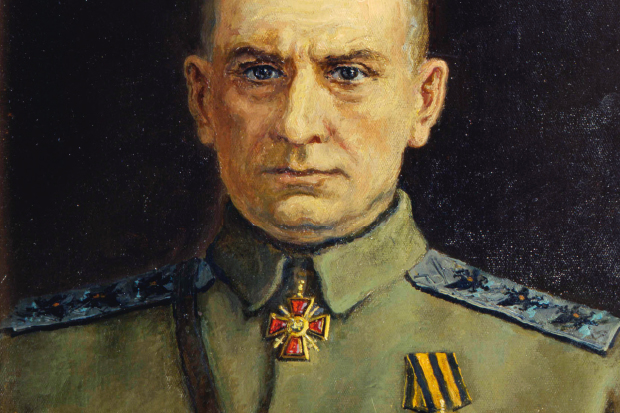For a show with a self-proclaimed ‘five-year mission’, Star Trek hasn’t done badly. Gene Roddenberry’s ‘Wagon train to the stars’ is celebrating its 50th anniversary, although, as Marcus Berkmann’s entertaining and irreverent history points out, things could have been very different. Roddenberry’s initial idea was for a troupe of disparate 19th-century adventurers to explore the undiscovered corners of the New World in a grand airborne dirigible. While the prospect of Leonard Nimoy arching an eyebrow in a flimsy, flying gondola is irresistible, it’s hard to imagine such a concept proving as enduring as Roddenberry’s eventual brainchild. Would Balloon Trek: The Next Inflation have carried its fanbase into the 21st century and beyond?
Berkmann is an unashamed fan, and writes as only a fan can: with intoxicated glee for the show’s high points and utter disdain for its failings. And, if the USS Enterprise was powered by dilithium crystals, then Berkmann’s book is fuelled by an equally potent supply of glorious trivia. I delighted in revelations that Dr McCoy’s medical instruments were unmodified Swedish salt cellars; that aliens were frequently constructed from piles of joke-shop novelty vomit; and that William Shatner’s 2006 kidney stone is now in the possession of an online casino, which offered $25,000for the privilege. Where did they find the gall? (A joke that Berkmann manfully resists making.)
The book wisely concentrates on the show’s iconic, but troubled, 1960s infancy, for this is where the really juicy stuff lies. The series lived under constant threat of cancellation, with its creator encouraging letter-writing campaigns to save it, even before the end of the first series’ transmission. Roddenberry himself comes over as a curious cove, his enduring obsession with mini-skirts frequently reminding me of Les Dawson’s Cosmo Smallpiece, and supporting writers Gene L. Coon and Dorothy Fontana (the latter beginning the series as Roddenberry’s secretary) are singled out for giving the show its true heart and soul.
It’s the tantalising insights into Berkmann’s own fandom that do likewise here. This is a book written by a man in touch with his inner 11-year-old, who fought back tears when delivering a pile of obsolete 1990s VHS tapes to his local dump (‘bigger landfill problem than disposable nappies,’ according to the attendant) and who sounds almost guilty at his own coldness — even anger — towards the recent, rebooted J.J. Abrams movies. But can he walk away? Of course not. And that’s fandom for you. It is, as someone once famously said at the beginning of this remarkable journey, highly illogical.
Which brings us neatly to Leonard, William Shatner’s heartfelt account of his friendship with his co-star, the erstwhile pointy-eared Vulcan Leonard Nimoy. Nimoy died in February last year, aged 83, and Shatner has clearly — and understandably — been hit hard.
The book works as an enjoyable, affectionate biography; painting a picture of Nimoy as a principled polymath, driven by the comparative lateness of his acting breakthrough to take on a relentless work schedule, perhaps at the expense of his personal life (‘I minored in family, and majored in career,’ he once confessed). He was a fluent Yiddish speaker; a former cab driver who once gave a lift to a young, inspirational John F. Kennedy; and — in the years immediately following Star Trek — the owner of ‘Leonard Nimoy’s Pet Pad’, a San Fernando pet shop specialising in exotic animals. ‘I like the kind of people that shop in pet stores,’ he stated at the time, with typical Zen cool.
But it’s when Shatner opens up about his own relationship with Nimoy that the story becomes truly affecting. In these passages, we learn as much about Shatner as we do about Nimoy; and he comes over as a surprisingly vulnerable figure. ‘I have had so many wonderful acquaintances, but so very few real friends,’ he reflects. ‘For a time, I had that with Leonard, and I lost it.’
And here lies Leonard’s heartbreaking twist. Despite the friendship taking years to flourish, the duo became close companions, helping each other through troubled and tragic private lives. But by the time of Nimoy’s death the relationship had reached a silent impasse, with Shatner unsure whether to blame a minor disagreement over a Star Trek documentary for the fallout. ‘As I’d never had a friend like Leonard before, I’d obviously never been in a situation like this, and I had no idea what to do about it,’ he confesses.
Nimoy died before the situation was resolved, and Leonard reads like an extension of the letter — published here in full — that Shatner wrote to his dying friend in a late attempt at reconciliation. He has no idea whether Nimoy ever saw the letter, but if he did — and if he’d read this book — he would surely have been both proud and touched.
Got something to add? Join the discussion and comment below.
Get 10 issues for just $10
Subscribe to The Spectator Australia today for the next 10 magazine issues, plus full online access, for just $10.
'Set Phasers to Stun: 50 Years of Star Trek', £11.49 and 'Leonard: My Fifty-year Friendship with a Remarkable Man', £15.99 are available from the Spectator Bookshop, Tel: 08430 600033
You might disagree with half of it, but you’ll enjoy reading all of it. Try your first month for free, then just $2 a week for the remainder of your first year.














Comments
Don't miss out
Join the conversation with other Spectator Australia readers. Subscribe to leave a comment.
SUBSCRIBEAlready a subscriber? Log in